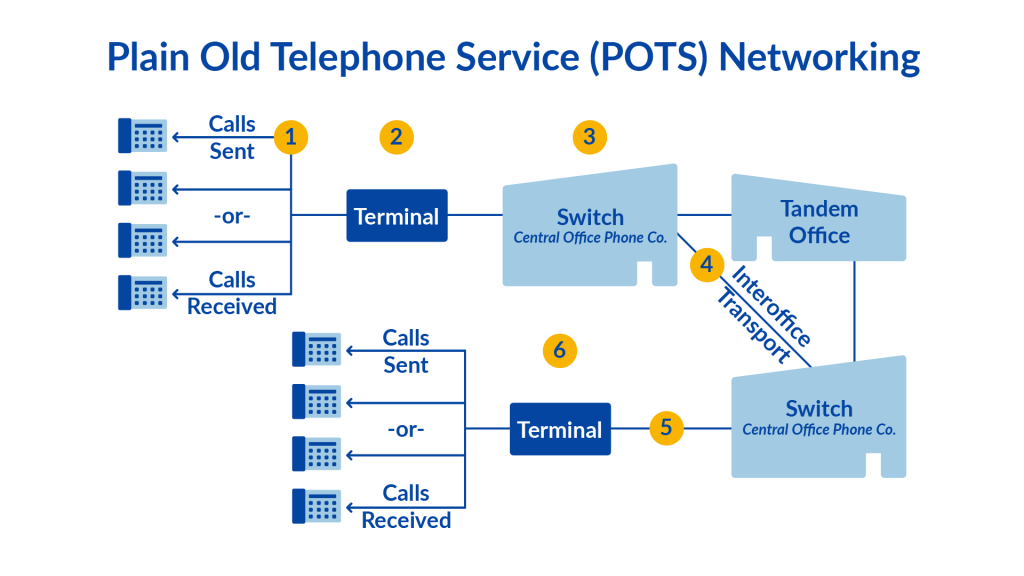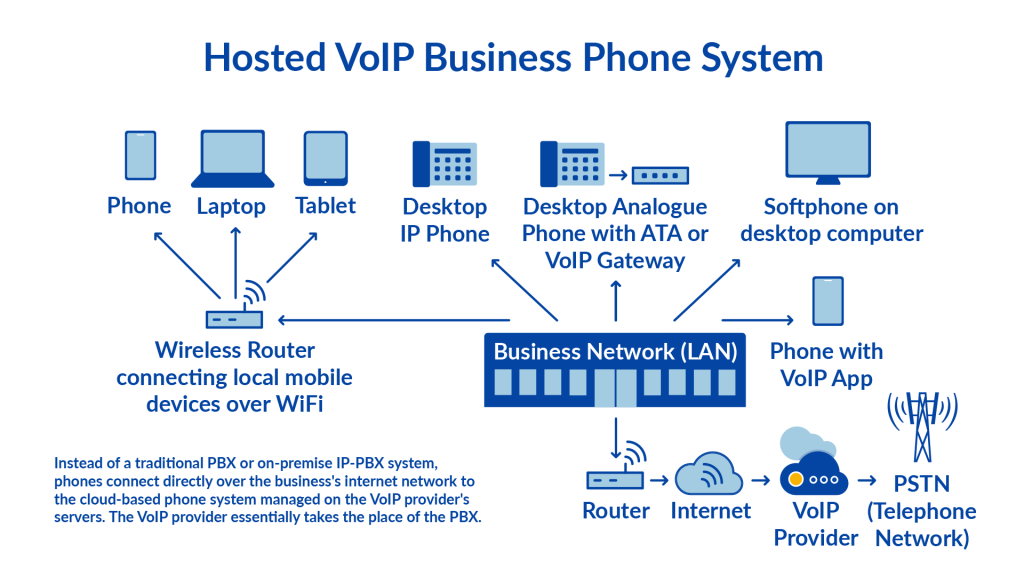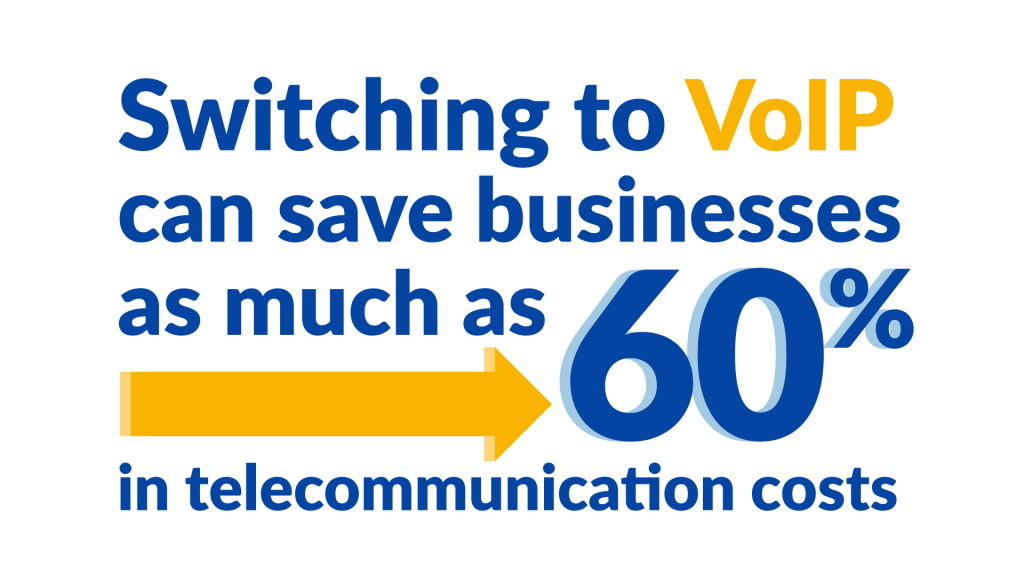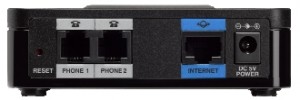What Is PSTN and How Does It Actually Work?

In this article, we will look at PSTN telephone networks in detail, covering all aspects, from basic setup and how the technology works to some of the reasons for the global decline in usage, along with an overview of some modern alternatives to PSTN.
Mục Lục
So, What is PSTN? (Public Switched Telephone Network)
PSTN stands for Public Switched Telephone Network, or the traditional circuit-switched telephone network. This is the system that has been in general use since the late 1800s.
Using underground copper wires, this legacy platform has provided businesses and households alike with a reliable means to communicate with anyone around the world for generations.
The phones themselves are known by several names, such as PSTN, landlines, Plain Old Telephone Service (POTS), or fixed-line telephones.
PSTN phones are widely used and generally still accepted as a standard form of communication. However, they have seen a steady decline over the last decade.
In fact, there are currently just 972 million fixed-line telephone subscriptions in use worldwide, the lowest tally this century so far.
Want to learn about VoIP? Upgrading your phone system?
Get your free copy of Cloud Phone Systems for Dummies.
Get It
How Do PSTN Phone Lines Work?
Think of a Public Switched Telephone Network (PSTN) as a combination of telephone networks used worldwide, including telephone lines, fiber optic cables, switching centers, cellular networks, as well as satellites and cable systems. These help telephones communicate with each other.

Put simply, when you dial a phone number your call moves through the network to reach its destination – and two phones get connected. To fully understand how a POTS actually works, consider what happens when you dial a number from your own phone.
Step #1 – Your telephone set converts sound waves into electrical signals. These signals are then transmitted to a terminal via a cable.
Step #2 – The terminal collects the electrical signals and transmits these to the central office (CO).
Step #3 – The central office routes the calls in the form of electrical signals through fiber optic cable. The fiber optic conduit then carries these signals in the form of light pulses to their final destination.
Step #4 – Your call is routed to a tandem office (a regional hub responsible for transmitting calls to distant central offices) or a central office (for local calls).
Step #5 – When your call reaches the right office, the signal is converted back to an electrical signal and is then routed to a terminal.
Step #6 – The terminal routes the call to the appropriate telephone number. Upon receiving the call, the telephone set converts the electrical signals back to sound waves.
This may sound complicated, but the thing to remember is that it takes a few seconds for your call to reach its destination. This process is facilitated by using fiber optic cables and a global network of switching centers.
Related: Ready for VoIP? Advantages and Disadvantages to Make the Right Choice

PSTN – Understanding The Art of Switching
You could say that PSTNs are all about switching, which forms the backbone of traditional phone networks. When a call is made, switches create a wire circuit between two telephones, with this particular connection lasting as long as the duration of the call.
Now, let’s have a look at each of the four types of switching which take place at different levels.
1. The Local Exchange
A local exchange – which may consist of one or more exchanges – hooks up subscribers to a PSTN line. Also known as a central office or a switching exchange, a telephone exchange may have as many as 10,000 lines.
All telephones are connected to the local exchange in a specific area. Interestingly, if you were to dial the number of your supplier located in the building next to yours, the call won’t leave your local exchange and will be routed to the supplier as soon as it reaches the exchange.
The exchange then identifies the number dialed so it can route the call towards the correct end destination. This process works as follows:
The first three digits of a phone number represent the exchange (the local switch), while the last four digits identify the individual subscriber within that exchange.
This means that when you dial a number and it reaches your local exchange, your call is immediately linked to the subscriber without the need for any further routing.
2. The Tandem Office
Also known as a junction network, a tandem office serves a large geographical area comprising several local exchanges while managing switches between local exchanges.
Let’s say you dialed the number of a client who lives in the same city but in another suburb. In this case your call will be routed to a tandem office from your local exchange, and the tandem office will route the signal on to the local exchange near your client’s location.
3. The Toll Office
This is where any national long-distance switching takes place.
A toll office is connected to all the tandem offices. For instance, if you have an office in another city you’ll find that, whenever you dial that branch’s number, your call will be switched through a toll office.
4. The International Gateway
International gateways manage international call switching, routing domestic calls to the appropriate countries.
PSTN – How Much Does It Cost?
Exactly how much would it cost you if you were to install and use a PSTN phone system in your home or office?
Cost for Consumers
If you require a PSTN phone connection in your home, you’ll need to have a telephone set and a PSTN provider.
Now, a decent phone set can be purchased for less than $60 from Walmart or Amazon, while a basic phone service with unlimited local calls will cost up to $30 per month.
And, if you need a plan with unlimited local and nationwide calls, you can sign up for one for less than $50 per month.
In total, you’d be paying $90-110 for the first month and $30-50 a month after that. Not too bad for a single household phone line.
Cost for Businesses
Things change dramatically when you switch to businesses. If you need a PSTN phone system for your business, you’ll need to have a separate line for each employee. This is why most businesses prefer VoIP instead of conventional phone systems.
If you have a small business with 10 or fewer employees, you can go with a month-to-month plan and it will cost you up to $30 per month per connection. And, of course, you’ll need to purchase handsets too.
If you need a PSTN for up to 40 employees, your best bet will be to opt for a Key System Unit (KSU). This option provides you with several additional features, making it a better choice than a regular telephone connection. It will cost you anywhere between $300 and $800 or even more per line!
PBX
Large organizations with 40 or more employees usually go with a Private Branch Exchange (PBX). A PBX converts your organization into a local exchange where all the phones in your organization are connected and you get to enjoy a range of services such as call transfer, call conferencing, auto attendant, voicemail, call hold, and more.
The PBX is connected to your local exchange. It routes external calls to a local exchange while all internal calls are routed by your PBX.

A PBX is a combination of software and hardware, so it will cost you some serious bucks. It comes with hubs, switches, phone adapters, routers, and several telephone sets. It is like creating your own small exchange where your PBX handles switches internally.
Most businesses use PBX phone systems to manage calls because they are easier. However, installing and managing a PBX is costly. The actual cost may vary depending on the number of features you prefer to have and the complexity of the PBX. A massive, complex, and feature-rich PBX will cost your business more than a simple PBX system with just some basic capabilities.
Generally, the installation and set-up fee can go as high as $4,000. Monthly maintenance costs start from $600 and can be as much as $2,000. Annual maintenance cost of a PBX can reach $10,000!
This makes PSTN telephones really expensive. It is the primary reason why most businesses don’t like them and are increasingly shifting to alternative phone systems (discussed later in the article).
Alternatives to PSTN?
The Plain Old Telephone Service has many robust features, but when it comes to businesses, POTS tends not to be a good fit because choosing this option costs a lot in the long-run (and let’s not forget that these services run on an old technology).
After all, the switching technology itself hasn’t changed much since the last century. This, is a potential drawback of PSTN phone networks as they don’t allow you to transmit other data types.
What’s more, this downside has led to a new and modern telephone service known as VoIP, which is proving to be nothing less than a game-changer in the telephone industry.
The Voice Over Internet Protocol (VoIP) is considered to be the best-known alternative to the PSTN system as it isn’t just cost-effective but also has several other benefits that businesses (and consumers) love.
VoIP is the transmission of voice and other data over the internet protocol network. Your VoIP telephone set is connected to a DSL or a cable modem connecting you to the Internet.
“Businesses are noting having saved up to 75% after switching to VoIP and they get to enjoy several additional benefits such as an increase in productivity, growth, improved employee communication, increase in employee engagement, better control, superior customer services, and more,” said one industry analyst.
Let’s dig deep and see what VoIP is and how it is different from PSTN.
What is VoIP?
Voice over IP (VoIP) is also known as IP telephony, broadband telephony, or internet telephony—but it means the same thing: your voice transmitted through the internet. The voice signal is converted into a digital signal and it then travels over the internet and reaches the destination.

Unlike PSTN, VoIP uses the internet where you don’t have to rely on a cable wire. There is no need for any exchange if you’re making a VoIP to VoIP call. However, if you dial a PSTN number from your VoIP, your call will be transmitted through an exchange. It works for all types of calls, data transfers, and more.
So how does a VoIP phone network work, and how is it different from the traditional landlines?
The PSTN uses circuit switching (or switching) for connecting calls. Business VoIP phone systems use digital packet switching. This type of switching is more efficient than circuit switching because the data is sent and received as and when needed. A constant connection isn’t maintained throughout the call duration.
Plus, VoIP doesn’t use dedicated lines. Instead, the data packets use routers and the internet, and each data packet travels through the least congested and shortest path.

When you dial a number from your VoIP phone, the voice signal is converted into digital data by the IP phone. The digital data is sent to the router. The router sends the packet to the closest router to the recipient and the connection gets completed.
Since packet switching is efficient and cost-effective, VoIP is widely used by businesses. As much as 31% of all businesses use VoIP phone systems because the technology brings down cost and boosts productivity.
But this isn’t all, there are tons of differences between a PSTN and a VoIP. Let’s have a closer look.
Feature
VoIP
Landline
Connection Type
Uses your internet connection to transmit data. Voice is converted into a digital signal.
Uses dedicated POTS line for voice transmission. The voice data travels in the form of electrical signals.
Switching
It uses packet switching which doesn’t require a dedicated line.
It uses circuit switching which requires a dedicated line for transmission.
Bandwidth
Uses bandwidth as per requirement. VoIP networks don’t reserve any bandwidth in advance and can work with as low as 10kbps.
POTS require up to 64kbps and all the bandwidth is reserved in advance.
Upgrading
Upgrading a VoIP phone system is rather easy. You need to increase bandwidth and update the software. No additional hardware required except telephone sets.
Upgrading a PSTN telephone system is complex. You need dedicated lines and you have to add new hardware which makes upgrading a pain.
Setup Cost
It will cost you between $2500 and $5000 to setup and install a VoIP phone system for your business for 30 employees. Actual cost may vary depending on the features and add-ons you opt for.
It will cost you between $8000 and $12000 to setup and install a PSTN telephone system for 30 employees. Actual cost may vary depending on the features and add-ons you opt for.
Call Cost
You’re not charged on the basis of distance. Free VoIP to VoIP calls and international and mobile calls might get a little expensive.
Calls are charged on the basis of distance. Local calls will be cheaper as compared to national or international calls. International and mobile calls are very expensive.
Monthly Cost
The monthly cost per user can range from $20 to $35.
The monthly cost per user can range from $30 from $60.
Maintenance Cost
VoIP doesn’t require a lot of maintenance. But if you do, it won’t cost you a lot of money since you mostly deal with software.
If you use a PBX for your business, maintenance cost will be really high. In case of normal PSTN connection, you’ll need minimal maintenance.
Add-ons
Most VoIP phone networks come pre-loaded with all the add-ons and features such as voicemail, call conferencing, auto attendant, virtual faxing, line monitoring, and more.
You get basic features for free such as call waiting, caller ID, and others but if you need more features like call conference, 3 way calling, etc., you’ll be charged for them.
Biggest Advantage
Very cost-effective for businesses of all sizes whether it be setup cost, maintenance cost, monthly cost, or upgrade costs.
Call stability is one of the best features of a PSTN. You’d rarely experience a call drop or voice distortion.
Biggest Drawback
Your VoIP phone system won’t work in case of a power outage or no internet connection.
PSTN is expensive for businesses. You have to spend a lot of money on maintenance, upgrades, and hardware as your business grows.
Softphones
It supports soft phones which allow your employees to make and receive phone calls on the go and without a physical phone.
Soft phones are not available.
Overall Efficiency
VoIP is very efficient in terms of data transmission as well as cost.
Inefficient in term of data transmission and cost.
Security
VoIP security depends on your internet connection.
depends on your internet connection.
Very secure since you use dedicated lines.
Phone Set
You can use a softphone, an SIP phone or your landline phone with an ATA. The SIP phones for businesses are available at different prices.
Telephone sets are inexpensive.
Integration
CRM, email marketing software, etc. Inter-connectivity isn’t a problem.
Your VoIP phone network can integrate with any software or a third-party tool such asemail marketing software, etc. Inter-connectivity isn’t a problem.
PSTN doesn’t support integrations.
We’ve done the research for you. Download the VoIP Phone System Buyer’s Guide loaded with best practices and recommendations.
Get It
Why Do Businesses Prefer VoIP Over PSTN?
The differences discussed above provide a solid ground as to why businesses prefer VoIP, but there are other benefits that your business will derive from the shift.
Here are a few reasons why VoIP is a better option for your business on any given day.
1. Cost Savings
The shift to VoIP from a PSTN phone network is costly because you are required to forgo your existing hardware, which is of no use when you make the shift.
But businesses don’t hesitate to bear this cost, why?
Because they get to save money in the long run.
VoIP lowers the cost of local calls by a whopping 40%, and softphones let your business save up to $1727 per month.
And once you switch to VoIP from PSTN, your business has the potential to save as much as 60% each month. This means VoIP phones can cost 60% less than PSTN phones, so it doesn’t hurt to bear a high initial cost.

2. Better Customer Service
Related: 30 Actionable Customer Service Tips to WOW! Your Customers
It is not about the features, it is all about how you use them.
Your VoIP phone system comes with several features at no cost. Your business can use these features to improve customer services and to eventually gain a competitive advantage.
For instance, you can use a call forwarding feature to route calls to an available employee so your customers don’t have to wait.
Even if you have a small team in your office and you own a small business, VoIP with its amazing features can make your business look bigger. Think of the impact it will have on your customers when they don’t have to wait for a call or when their calls are automatically attended or when their call is received by your salesperson on the go via a softphone.
This is exactly what your customers want. Statistics have shown that 87% of consumers want brands to try hard to create a seamless experience for customers, and half of consumers expect to get a response from a business within 24 hours.
3. Better Productivity
So what happens when you have happy customers?
Your employees are satisfied, and it eventually increases their productivity.
VoIP has a direct link to improved productivity.
Unified messaging saves employees 43 minutes per day, and mobile workers save 55 minutes per day. Unified communications can help save companies with 100 employees up to 191 hours per day and up to $920K per year in productivity.
The VoIP telephone system helps your employees communicate with one another more effectively to where they can reach them on the first try. They no longer have to wait for a response from another department.
4. Scalability
When your business grows, you’ll hire new employees and you’ll need new telephones. This is where VoIP is a life-saver. It is dead cheap to add new connections as your business grows. In fact, you can do it instantly without the need to upgrade any hardware.
If you cannot afford new phone sets, you can use softphones which your employees can use on their computer, smartphone, or laptop.
Scaling a VoIP phone network is super-easy as compared to a PSTN network where you’ll need a lot of resources.
Thinking about Nextiva? Our customers are thinking out loud here >>
Show me
PSTN – Frequently Asked Questions
Here are a few FAQs related to PSTN and VoIP telephone networks that will help you to switch from PSTN to VoIP in your organization.
1. Can a PSTN Phone Work with VoIP?
Yes, it can. You can use an Analogue Telephone Adapter (ATA), which will convert your traditional telephone set into a digital telephone set. It can then be used with your VoIP phone system.

However, you won’t be able to get access to all the features and add-ons of your VoIP network with this type of landline phone. It is best to use a SIP-enabled phone to get access to all the features. After all, it is all about features, so what’s the point in having a VoIP network if you don’t want to use any additional features?
2. How Do I Know How Much Bandwidth I Have?
One of the prerequisites of switching to VoIP is having sufficient bandwidth.
You will need 0.1 mbps per device. So if you need 100 devices, you’ll need to have 10 mbps of bandwidth.
3. What Equipment Do I Need For VoIP?
You need a reliable internet connection, SIP-enabled device, and a VoIP provider like Nextiva. Our award-winning service team can provide you with phone sets and all types of support.
4. Do My Employees Need Any Training To Use VoIP?
No, not at all. They can get started immediately without any training. You use SIP-enabled phones just like your traditional phones, so anyone can use them.
5. How Can I Switch to VoIP?
You’ll need to get in touch with a reliable VoIP service provider – Nextiva can help!
Conclusion
No matter how much you love your PSTN phone system, the technology is dated and likely doesn’t align well with your business.
If you love your business and want to grow it, you will need to switch to a VoIP phone system. The POTS phones are great, but they are no match for a VoIP service—make sure you choose the right option.















![Toni Kroos là ai? [ sự thật về tiểu sử đầy đủ Toni Kroos ]](https://evbn.org/wp-content/uploads/New-Project-6635-1671934592.jpg)


